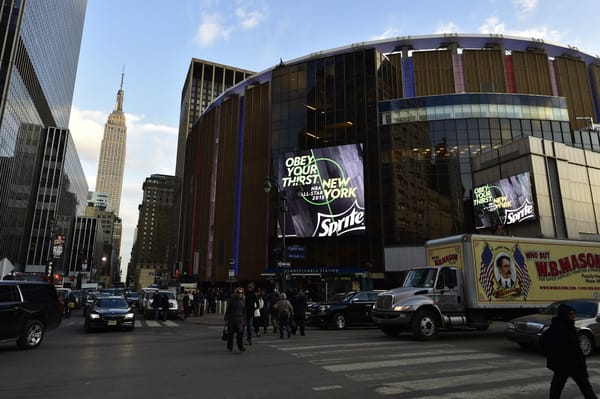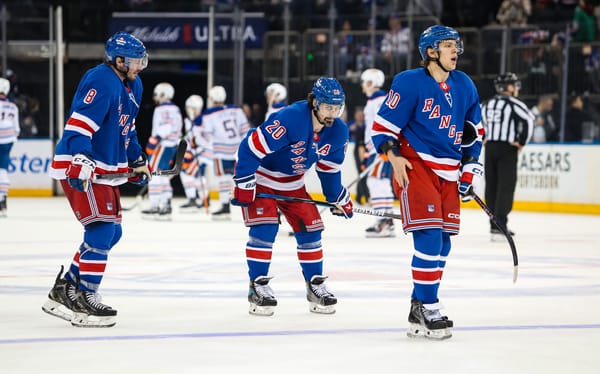2020 Report Card: Marc Staal
Could this be the last season report card for the veteran defenseman?
When we left off the 2018-19 season with Marc Staal, the expectations for him this season were set very low after his numbers and Blueshirt Banter grades were terrible. Not much has changed this past season, as his role on the Rangers continues to be the veteran defenseman who provides leadership, but isn’t expected to produce points. Although he received slightly better grades this season from our staff, he continues to be a question mark moving forward in the rebuild of team with a ton of young talent coming up.
Performance This Season
On October 5th, 2019, Staal became the seventh player for most games played in franchise history with his 842nd career game. Early on in this past season, Staal also become a healthy scratch for the first time in his 13-year career as a Blueshirt. During the three consecutive games he was scratched, Quinn played Ryan Lindgren and Libor Hajek instead. Staal came back only to be out for a month again; he had blocked a shot on a play with his ankle, which caused a serious ankle infection that led to the defenseman being rushed into emergency surgery on November 8th. He returned to the lineup on December 6th and played well upon his return, only to falter and then gain some more momentum just prior to the NHL pause in February.
Looking at his season as a whole, Staal played 52 games and had 11 points- 2 goals and 9 assists. Staal spent most of his season alongside Tony DeAngelo on the ice, but also rotated with other defenders throughout the year.
Due to his injuries, Staal lost time this season to positively influence his stats. He also averaged less ice time this year — 17:39 minutes on the ice whereas last season, he averaged 19:25 minutes in ice time. Following the pause and while playing the exhibition games against the Carolina Hurricanes, he scored one goal and didn’t earn any assists.
One way to break down his season further by the numbers is with Evolving-Hockey’s Goals Above Replacement. He actually made the list of the 25 worst GAR’s in the league, though he was not the lowest ranking member of his team. His GAR of -6 consists of his even strength offense (-4), even strength defense (-0.4), power play offense (0), and drawn penalties (0.4).
His role isn’t necessarily to score, so the negative offensive component isn’t particularly surprising. His shooting percentage increased form 3.6 to 4.3. Staal took about half of the amount of shots he took last year with only 87 total shot attempts and 46 shots on goal. But in 5-on-5 situations and using Corsi to represent puck possession, they did not dominate the ice offensively when Staal was on the ice, they took just 43.53 percent of the shot share. When it came to Rangers’ scoring opportunities in 5-on-5 situations, the team was expected to score 44.18 percent of the expected goal share with him on the ice. Relative to his teammates, the Rangers took fewer shots and quality chances with him on the ice.
This year, that offensive impact was particularly low as shown below on his Isolated Impact from HockeyViz. On the top row of heat maps, blue represents areas where offense is not being created. The same is true for the bottom row, but there is where blue is idea because it shows shot suppression.
Staal’s role in New York, rather, has been to use his defensive mindset and size in order to defend the net. However, he lost many battles in front of the net which led to scoring opportunities for the opposing team and turned over the puck too often. In allowing a rate of 65.14 shot attempts against and 2.8 expected goals against with Staal on the ice at 5-on-5, the Rangers allowed more shots and scoring chances with him deployed relative to his teammates. As the heat maps above show, while he did limit more chances than in the last two years, his defensive play is still concerning.
Grade: C | BSB Average: C-
Marc Staal has been a part of the New York Rangers organization since he was drafted at the 2005 NHL Draft as their 12th overall pick in the first round. He made his NHL debut two years later and he is now the longest-tenured skater for the Blueshirts. Staal spoke to this in August:
“You think as a young player you always want to be in one spot and play for one team, and the fact that I’ve been able to be here as long as I can, I gotta pinch myself, and I do realize how lucky and grateful I am for it. To be a part of this community and this fan base and play as long as I have has been incredible.” (NY Post)
His contract still carries a cap hit of $5.7 million next year, in the final year of his deal, and is topic of discussion when it comes to possible Ranger buyouts. If the Rangers decide to buyout Staal, they would end up saving $2.133 million and would result in a cap hit of $3.567 million in the 2020-21 season. Additionally, the buyout would come with a manageable cap hit of $1.067 million in 2021-22.
Staal is at the end of his career with the Rangers as he has continued to fall over the last couple of seasons, which is why he received an overall C- grade from our staff. While no one can fault him for age-related regression, or how injuries have derailed his career, his decline and the up-and-coming talents within the organization put the defender in this situation.
Until a decision is made, Staal has been keeping himself in shape for the upcoming season by woking out with his younger teammates, such as Brendan Lemiuex. And if he should still be in his Broadway blues next season, he’ll be expected to play the same role of veteran defenseman as he has played. But hopefully, he can end his career with the Rangers on a high note.
Data via Evolving-Hockey.com and CapFriendly.com.




